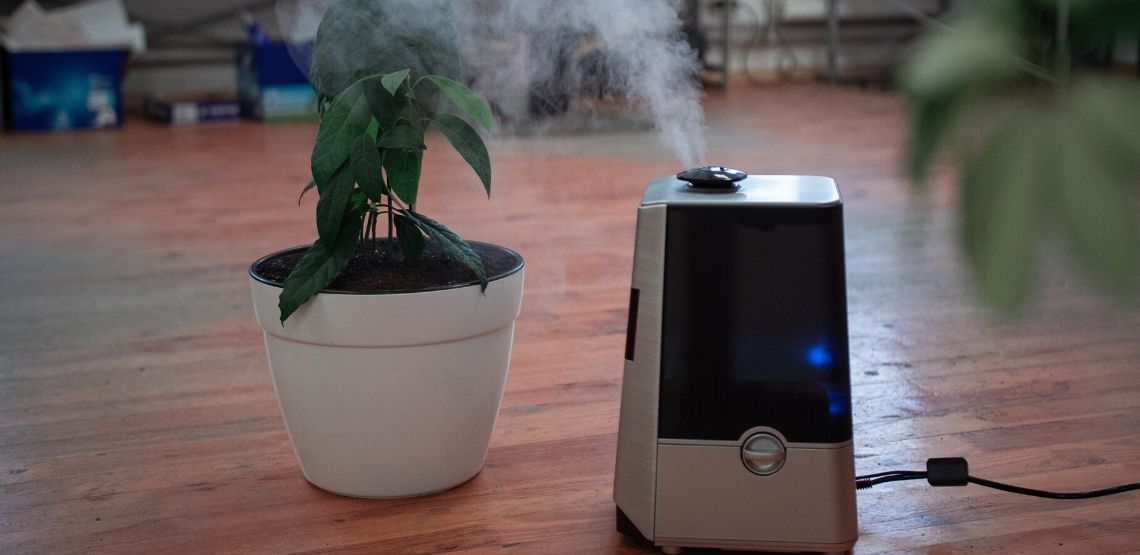Indoor Air Quality and Your Health
Indoor air quality, or IAQ, refers to the quality of the air within and around your building, such as your home, school or office. The average American spends 90% of their time indoors, especially during colder weather. This is why indoor air quality requires attention, as it as an essential determinant of a healthy lifestyle.
Every household has potential sources of pollutants like carbon monoxide, radon, formaldehyde, asbestos and hydrocarbons. The concentration of certain pollutants is up to five times higher in indoor air. All these factors sometimes make your indoor air more toxic than the pollution outside.
The Importance of Indoor Air Quality for Overall Health
Indoor air quality is a serious health issue. Indoor air pollution often results in chronic lung problems like asthma and COPD. The presence of pollutants like radon, formaldehyde and asbestos fibers in the indoor air have significant carcinogenic effects.
Children spend most of their time indoors, especially in urban areas. According to the World Health Organization (WHO), household air pollution almost doubles the risk for childhood pneumonia and is responsible for close to half of the deaths from pneumonia among children less than five years old.
Immediate effects of indoor air pollution mimic flu-like symptoms including headaches and sinus congestion. Sometimes, people suffer from “perpetual cold” and often overlook bad air quality as being the cause.
Prolonged exposure to indoor air pollution can be severe or even fatal, especially for the elderly, children and people with compromised immunity. Stroke, ischemic heart disease and lung cancer are examples of few diseases caused by indoor air pollution.
Causes of Indoor Air Pollution
Often, we are not aware of the presence of any pollutants in our home, but unfortunately, we bring most of these pollutants into our home. Hazardous pollutants affecting air quality can come from various sources like:
- Carpet and rugs. They are a source of dust, mites, pet hairs, particle pollution, mold spores, lead and pesticides.
- Indoor combustion. This comes from tobacco, wood, coal and cooking. It can release particulate matter and carbon monoxide into the household environment.
- Furniture chemicals, household cleaners, paints, air fresheners and insecticides. These products release volatile organic compounds (VOC).
- Heating, cooling systems and humidifiers. These release dust, pollen and molds into the air.
- Deteriorating or damaged insulations, fireproofing or floor tiles. They lead to suspension of asbestos fibers in indoor air.
- External factors. This leads to the presence of radon, nitrogen dioxide and other environmental pollutants in indoor air.
Related Search Topics (Ads)
How to Know if the Air in Your House Is Unhealthy
Certain health effects indicate air quality issues, such as:
- Constant sneezing or coughing
- Shortness of breath on mild exertion
- Dry itchy skin
- Eye, nose and throat irritation
- Headaches and dizziness
If you have these symptoms, then you should discuss them with your doctor to know if they could be related to poor indoor air quality. Also, check if these symptoms appeared after you had moved to a new house, recently refurbished your home or treated your home with pesticides. You can test the air quality at your home with an AQI monitor. We recommend using an AQI monitor like Eve Room - Indoor Air Quality Monitor. It gives a real-time snapshot of the air quality, temperature and humidity in your home.
The federal government recommends measuring the level of radon in your home. You can use Airthings Wave Smart Radon Detector to measure the radon gas level at your home.
How to Control Indoor Air Pollution
Here’s how we can minimize air pollution in our homes:
- Avoid smoking indoors
- Increase ventilation by opening doors and windows
- Use exhaust fans or an extractor hood to vent your kitchen and bathrooms
- Keep your house clean with regular dusting. Use a vacuum cleaner with HEPA filter to remove allergy causing pollens and dust mites
- Avoid using air fresheners
- Check and clean your air filters and ducts regularly
- Wash bedding and curtains regularly
- Avoid using products and chemicals that contribute to indoor air
- Use zero VOC paints on your walls
pollution. Instead, use safer household products.
How to Improve Indoor Air Quality
Sometimes, the air quality index is poor, especially in populated cities. Fortunately, there are many ways to improve indoor air quality.
Plants
Plants have been known to reduce stress and boost moods, but they are also effective at purifying indoor air. Some plants act as oxygen bombs to drastically reduce indoor air pollution.
A study performed by NASA revealed that houseplants are capable of decreasing the CO2 by 55%, volatile organic compounds (VOC) by 70% and particulate matter concentrations by 30%.
Let’s look at some of these easy to grow houseplants that are effective at removing pollutants from your home. These plants include:
- English ivy
- Snake plant
- Aloe Vera
- Spider plants
- Daisy
- Peace lily
- Devil’s ivy
- Areca palm
Air Purifiers
This expensive but effective air purifying option is a thoughtful investment to improve the quality of your life. They can remove pollens, smoke, dust and even some gases from your home. We recommend air purifiers with HEPA filters as these are efficient at removing fine particles and common allergens from your home. Some of the best air purifiers are:
- Blue Pure 211+ Air Purifier. It is a smaller and affordable option that claims to purify 99% of the airborne pollutants. Its filter can remove cooking and smoking odors. It is suitable for rooms between 100 and 175 square feet in dimension.
Alen BreatheSmart FIT50 Air Purifier. Its mechanical filtration system uses activated carbon to remove the smallest bit of airborne pollutants. It also tells you the real-time AQI at your home with five different light color options.- Airmega 400 Smart Air Purifier. It is a great option to purify a bigger room or apartment as it can cover up to 1500 square feet. It claims to clean the air twice in an hour and can remove up to 99% of pollutants.
Article Resources
- Cleveland Clinic (17 Simple Ways to Prevent Air Pollution in Your Home)
- EPA (Improving Indoor Air Quality)
- The New York Times (Dangers of Indoor Air Pollution)
- How Stuff Works (How Indoor Air Pollution Works)
- World Health Organization (Indoor air quality risks)
- Healthline (The Best Air-Purifying Plants for Your Home)
- American Lung Association (Indoor Air Pollutants and Health)

